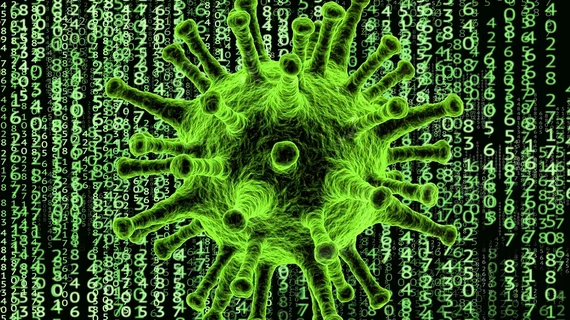With structured reporting, chest x-rays have high likelihood of predicting positive RT-PCR test results
Using a structured reporting approach for chest x-rays of patients suspected of having COVID-19 has a high likelihood of predicting positive RT-PCR testing results.
That’s according to a new analysis out of the University College Dublin in Ireland, published on Tuesday. With constraints on resources and lab tests that could require 24 hours-plus for results, Andrew Yates and colleagues devised a systematic approach for reporting the likelihood of COVID-19 pneumonia on CXR.
They discovered that patients with positive imaging results had an 88% probability of also producing a positive real-time reverse transcription polymerase chain reaction test, according to their analysis, published Wednesday.
“Given that there are often constraints on resources—such as personal protective equipment, ventilators and healthcare staff—it is important to optimize decision-making on whether to manage a patient in a COVID-specific pathway,” Yates, a radiology resident with Mater Misericordiae University Hospital, and colleagues wrote Nov. 11 in the European Journal of Radiology. “We have found that, using a COVID-specific structured approach to interpretation, a CXR designated as ‘high suspicion’ or ‘characteristic’ in a patient presenting to the emergency department with clinically suspected COVID-19 pneumonia correlates with a very high likelihood of a positive RT-PCR.”
Those two designations represent the highest severity on the hospital’s five-point scoring scale, which starts at “normal,” followed by “unlikely,” and “indeterminate.” To test their structured approach, Yates et al. conducted a retrospective review of patients who visited the ED under suspicion of the disease and had both chest x-rays and a lab test for COVID. Two radiologists then reviewed the images, blind to the RT-PCR results, and sorted them into one of the five categories in the structured template.
All told, 582 patients were included in the analysis, with almost 25% testing positive for the virus. The research team discovered a high positive-predictive value of 88% and specificity of 98%, making the structured approach “a useful tool in the diagnosis of COVID-19.” The two readers also agreed at a high rate, with an absolute concordance score of 71.1%.
“We have demonstrated very good agreement in the application of this structured approach in a single institution and feel that this practice is generalizable to other institutions,” Yates and co-authors noted.
You can read more on their results in EJR here.

